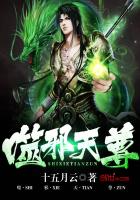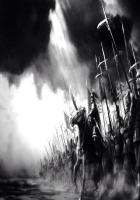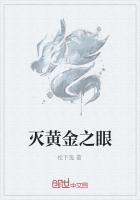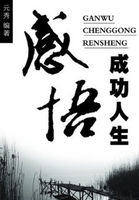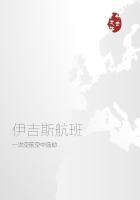Florence continued in these troubles till the time of Frederick II., who, being king of Naples, endeavored to strengthen himself against the church; and, to give greater stability to his power in Tuscany, favored the Uberti and their followers, who, with his assistance, expelled the Buondelmonti; thus our city, as all the rest of Italy had long time been, became divided into Guelphs and Ghibellines; and as it will not be superfluous, I shall record the names of the families which took part with each faction. Those who adopted the cause of the Guelphs were the Buondelmonti, Nerli, Rossi, Frescobaldi, Mozzi, Bardi, Pulci, Gherardini, Foraboschi, Bagnesi, Guidalotti, Sacchetti, Manieri, Lucardesi, Chiaramontesi, Compiobbesi, Cavalcanti, Giandonati, Gianfigliazzi, Scali, Gualterotti, Importuni, Bostichi, Tornaquinci, Vecchietti, Tosinghi, Arrigucci, Agli, Sizi, Adimari, Visdomini, Donati, Passi, della Bella, Ardinghi, Tedaldi, Cerchi. Of the Ghibelline faction were the Uberti, Manelli, Ubriachi, Fifanti, Amidei, Infangati, Malespini, Scolari, Guidi, Galli, Cappiardi, Lamberti, Soldanieri, Cipriani, Toschi, Amieri, Palermini, Migliorelli, Pigli, Barucci, Cattani, Agolanti, Brunelleschi, Caponsacchi, Elisei, Abati, Tidaldini, Giuochi, and Galigai. Besides the noble families on each side above enumerated, each party was joined by many of the higher ranks of the people, so that the whole city was corrupted with this division. The Guelphs being expelled, took refuge in the Upper Val d'Arno, where part of their castles and strongholds were situated, and where they strengthened and fortified themselves against the attacks of their enemies. But, upon the death of Frederick, the most unbiased men, and those who had the greatest authority with the people, considered that it would be better to effect the reunion of the city, than, by keeping her divided, cause her ruin. They therefore induced the Guelphs to forget their injuries and return, and the Ghibellines to lay aside their jealousies and receive them with cordiality.
CHAPTER II
New form of government in Florence--Military establishments--The greatness of Florence--Movements of the Ghibellines--Ghibellines driven out of the city--Guelphs routed by the forces of the king of Naples--Florence in the power of the king of Naples--Project of the Ghibellines to destroy Florence opposed by Farinata degli Uberti--Adventures of the Guelphs of Florence--The pope gives his standard to the Guelphs--Fears of the Ghibellines and their preparations for the defense of their power--Establishment of trades' companies, and their authority--Count Guido Novello expelled--He goes to Prato--The Guelphs restored to the city--The Ghibellines quit Florence--The Florentines reform the government in favor of the Guelphs--The pope endeavors to restore the Ghibellines and excommunicates Florence--Pope Nicholas III.
endeavors to abate the power of Charles king of Naples.
Being united, the Florentines thought the time favorable for the ordination of a free government, and that it would be desirable to provide their means of defense before the new emperor should acquire strength. They therefore divided the city into six parts, and elected twelve citizens, two for each sixth, to govern the whole. These were called Anziani, and were elected annually. To remove the cause of those enmities which had been observed to arise from judicial decisions, they provided two judges from some other state,--one called captain of the people, the other podesta, or provost,--whose duty it was to decide in cases, whether civil or criminal, which occurred among the people. And as order cannot be preserved without a sufficient force for the defense of it, they appointed twenty banners in the city, and seventy-six in the country, upon the rolls of which the names of all the youth were armed; and it was ordered that everyone should appear armed, under his banner, whenever summoned, whether by the captain of the people or the Anziani. They had ensigns according to the kind of arms they used, the bowmen being under one ensign, and the swordsmen, or those who carried a target, under another; and every year, upon the day of Pentecost, ensigns were given with great pomp to the new men, and new leaders were appointed for the whole establishment. To give importance to their armies, and to serve as a point of refuge for those who were exhausted in the fight, and from which, having become refreshed, they might again make head against the enemy, they provided a large car, drawn by two oxen, covered with red cloth, upon which was an ensign of white and red.
When they intended to assemble the army, this car was brought into the New Market, and delivered with pomp to the heads of the people. To give solemnity to their enterprises, they had a bell called Martinella, which was rung during a whole month before the forces left the city, in order that the enemy might have time to provide for his defense; so great was the virtue then existing among men, and with so much generosity of mind were they governed, that as it is now considered a brave and prudent act to assail an unprovided enemy, in those days it would have been thought disgraceful, and productive only of a fallacious advantage. This bell was also taken with the army, and served to regulate the keeping and relief of guard, and other matters necessary in the practice of war.






